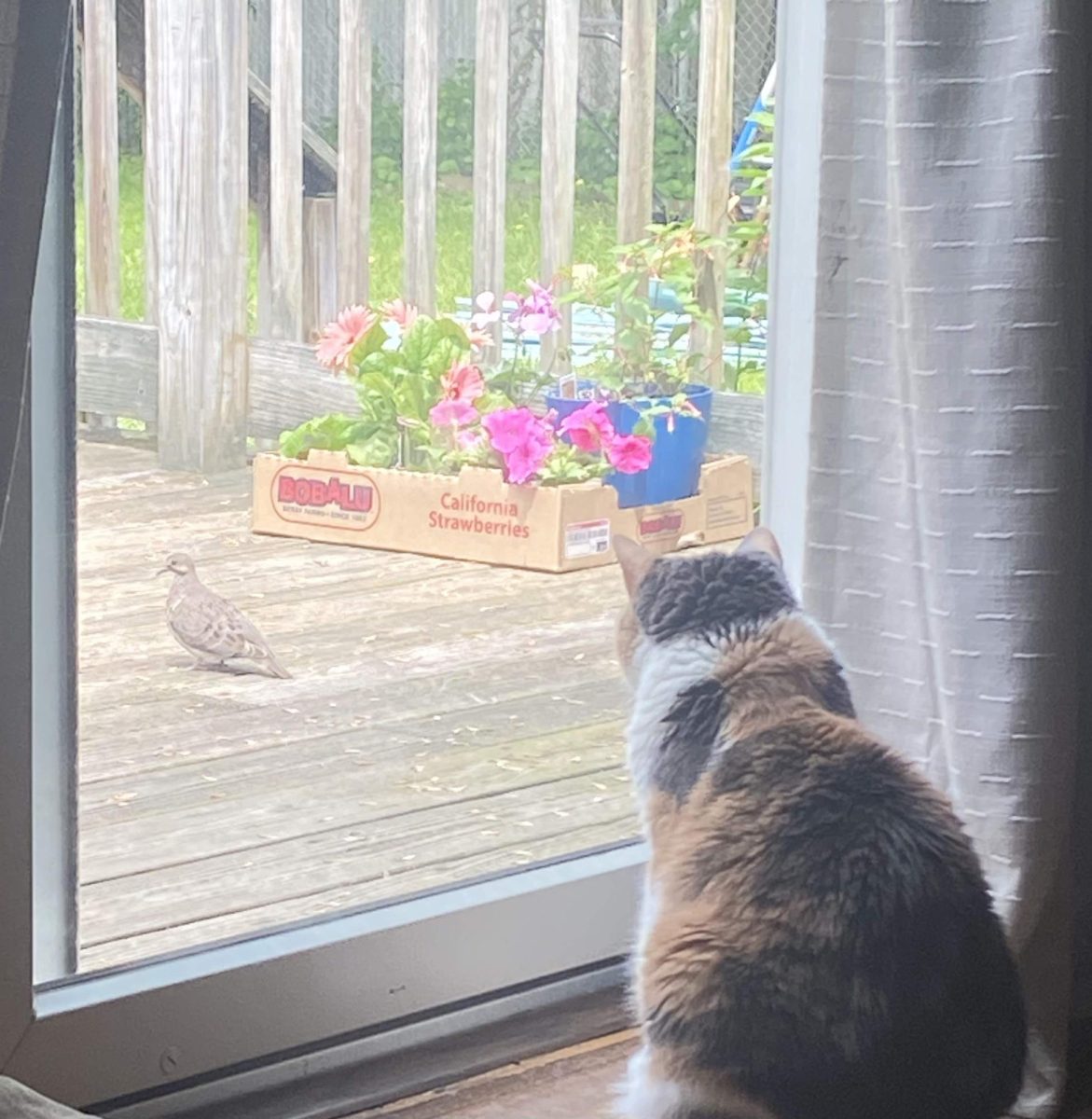How To Train a Puppy: The Crucial First Steps
Training a Puppy: Pictured is puppies Luna (front) and Lena (back) practicing their commands. Photo Courtesy: Shannon Flynn, August 15,2020
March 4, 2021
This year, more time than ever is spent at home. With many parents and guardians working remote and some students distance learning, it is an ideal time to get a dog.
A puppy or new dog needs a vast amount of training and attention. It’s easier than ever to accommodate this when you can be home throughout the day.
Welcoming a dog into your home is a rewarding experience but is still a big responsibility that shouldn’t be taken unless you have the time and necessities to raise and take care of a dog.
Different breeds of dogs differ in personality, appearance, size, hair type, and necessities. Before you decide to get a dog, make sure you are educated on your dog’s breed and what that specific breed needs to live a safe and happy life.
Linked below is a website with brief articles on different dog breeds and what to expect with each breed. https://www.purina.co.uk/dogs/dog-breeds/dog-types
When you first get your dog, it is crucial to create an initial bond prior to training in order to ensure the puppy feels safe in their environment and trusts you. An emotional foundation will make the training process easier for the owner and puppy.
Milford resident and experienced dog owner Cindy Dobie says, “We played and handled [our puppy] a lot in terms of creating a bond with him.”
This bond should be created when the puppy is 8-16 weeks old. Dogs who lose trust and don’t develop an emotional foundation in their puppyhood will have a harder time being trained but can make progress with patience and communication.
After building a bond with your puppy, the next step before diving into obedience training is giving the puppy exposure to the environment.

Keep in mind that your puppy should be up to date on it’s vaccinations, and also be sure to consult with your veterinarian before bringing your dog in contact with other animals.
According to certified dog trainer Kate Naito, “They’re curious—and should be learning—about how the world around them works, specifically what things look like and sound like.”
For example, if you are raising a dog in an urban setting, accustom your dog to the sounds and views they will experience in their everyday life. Whether it be the sounds of traffic or the sight of other people and animals, this is an important step in making your pup feel comfortable.
Some ways that this can be done is by taking your puppy to local parks, going on walks, introducing them to friends, letting them meet another puppy, or even going on a drive where the dog can look out the car window.
Not all puppies will be ready to immediately be in an environment with a lot of people or dogs around them, so be gradual and stay within your dog’s comfort zone.
The first few weeks of a dog’s socialization is important because the positive experiences made when a dog is discovering new people, places, and things will teach them to be accepting of new things rather than fearful or aggressive.
Freelance writer and dog trainer Amy Bender writes, “Properly socialized puppies are less likely to develop behavior problems as they grow into adults.”
Bender has published over a hundred articles and has worked professionally with dogs for over a decade.
At 16 weeks old, the goal is that your puppy is properly socialized and comfortable when meeting other dogs, strangers, and their veterinarian.
A popular and highly effective method of training is crate training. Crate training is the process of teaching a pet to accept a dog cage as a familiar and safe location.
This method should be used as soon as you welcome a new dog into your home, whether it’s a puppy or an older dog.
Some owners may feel guilty about keeping their dog in the crate, but crate training is actually beneficial for dogs because it allows them a safe space where they can go when they are anxious or need an escape from a stressful situation.
Junior Rian Koenig uses crate training with her dog Sophie, a six-month-old German Shorthaired Pointer. Koenig says, “ I recommend crate training to others because it’s an important tool to have. It’s good because it helps prevent your dog from freaking out everytime you leave and they have to stay in their crate. If they get used to their crate at a young age it’s a lot easier.”
Overall, getting a puppy is a large commitment, but when the training pays off it is very worth it. A dog can provide companionship and love that is unmatched by a person, and they are a great addition to any household.








